Reseeding annuals are a gift for gardeners. They sow themselves readily with little effort on your part, allowing you to sit back and enjoy wildflowers where they sprout. Native species and heirlooms are the best annuals to sow, as they adapt well to gardens and local climates. They grow seedlings that resemble the parents with similar traits, hues, and sizes.
Hybrid annuals reseed, too, although the seedlings may not resemble the parents. Hybrids aren’t genetically stable, meaning each seed has a unique genetic code. This presents itself with different flower colors, shapes, and plant sizes in the seedlings. You may let hybrid annuals go to seed, just know they won’t sprout with the traits you’d expect.
No matter which annuals you grow, letting them go to seed in the fall is a fun experiment. You never know what kind of plants will sprout, and you’ll have seedlings to look forward to in early spring. Whether you like growing vegetables, herbs, or flowers, there are self-sowing annuals for your garden. Here are 15 of the best ones!
Sweet Pea
Sweet peas resemble the vegetable with delicate pea-like flowers in gorgeous hues. Sweet pea vines are toxic, including their seeds, flowers, and leaves. Plant them to enjoy their easy-growing blossoms that bloom throughout the cool seasons with little effort.
A favorite cultivar is ‘Beaujolais’ with maroon-crimson flowers and dark hues. Grow it alongside a lighter color variety like ‘High Scent’ so the bright whites can contrast with the dark reds. ‘Beaujolais’ is an heirloom, so it’s perfect if you’re looking for a reseeding cultivar that sprouts true to seed.
You may want to take cuttings of sweet pea flowers throughout spring and summer for floral bouquets. Do so freely, as it encourages more blooms to form. If you want sweet peas to self-sow, let them grow flowers in late summer without cutting them off. Pollinators will fertilize the blossoms, seeds will form, and they’ll fall to the ground to sprout this autumn or next spring.
Toadflax
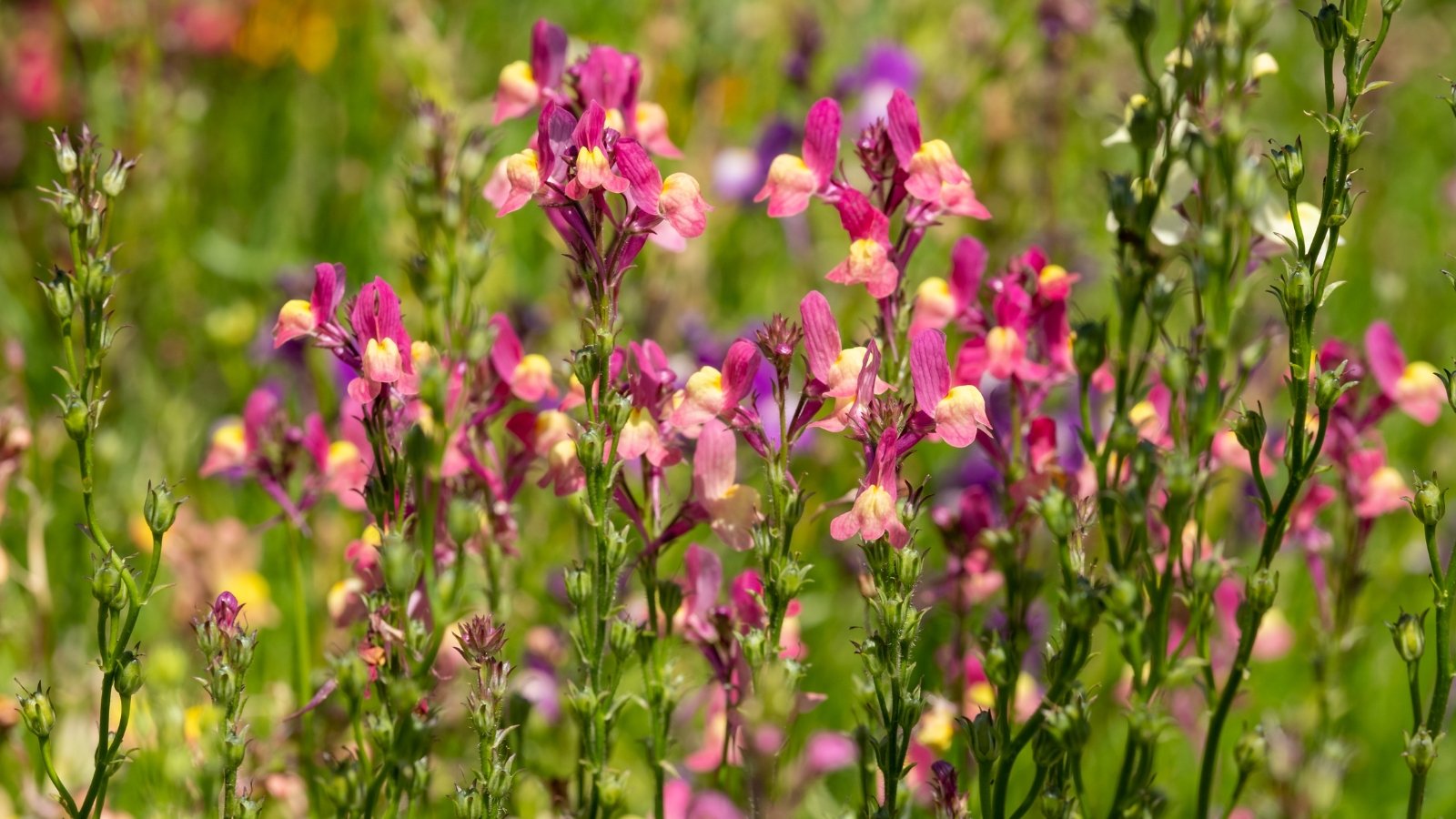
Toadflax, or linaria, is an old garden favorite that originates in Morocco. Dozens of cultivars are available with flowers in red, purple, orange, white, and pink. The blossoms resemble snapdragon flowers, and they often have a different colored patch on their lower half. The contrast delights onlookers as the blooms sprout elegantly atop stems with needle-like leaves.
There are dozens of cultivars with various shades, so it’s best to choose a seed blend with multiple colors like ‘Fairy Bouquet.’ That way, you can choose which hues you prefer by weeding the seedlings you don’t like. Over time, the seeds that sprout will only be from the toadflax you prefer, and they’ll give you the flower colors you’d like to see.
‘Fairy Bouquet’ is an heirloom seed mix, so the seedlings that sprout will reliably resemble their parents. Opt for the species type Linaria maroccana if you prefer more subtle flowers. They sprout with purple hues and yellow-white blotches on the lower petals. The species type is common on the northern East Coast where it naturalizes in wild spaces.
Poached Egg Plant
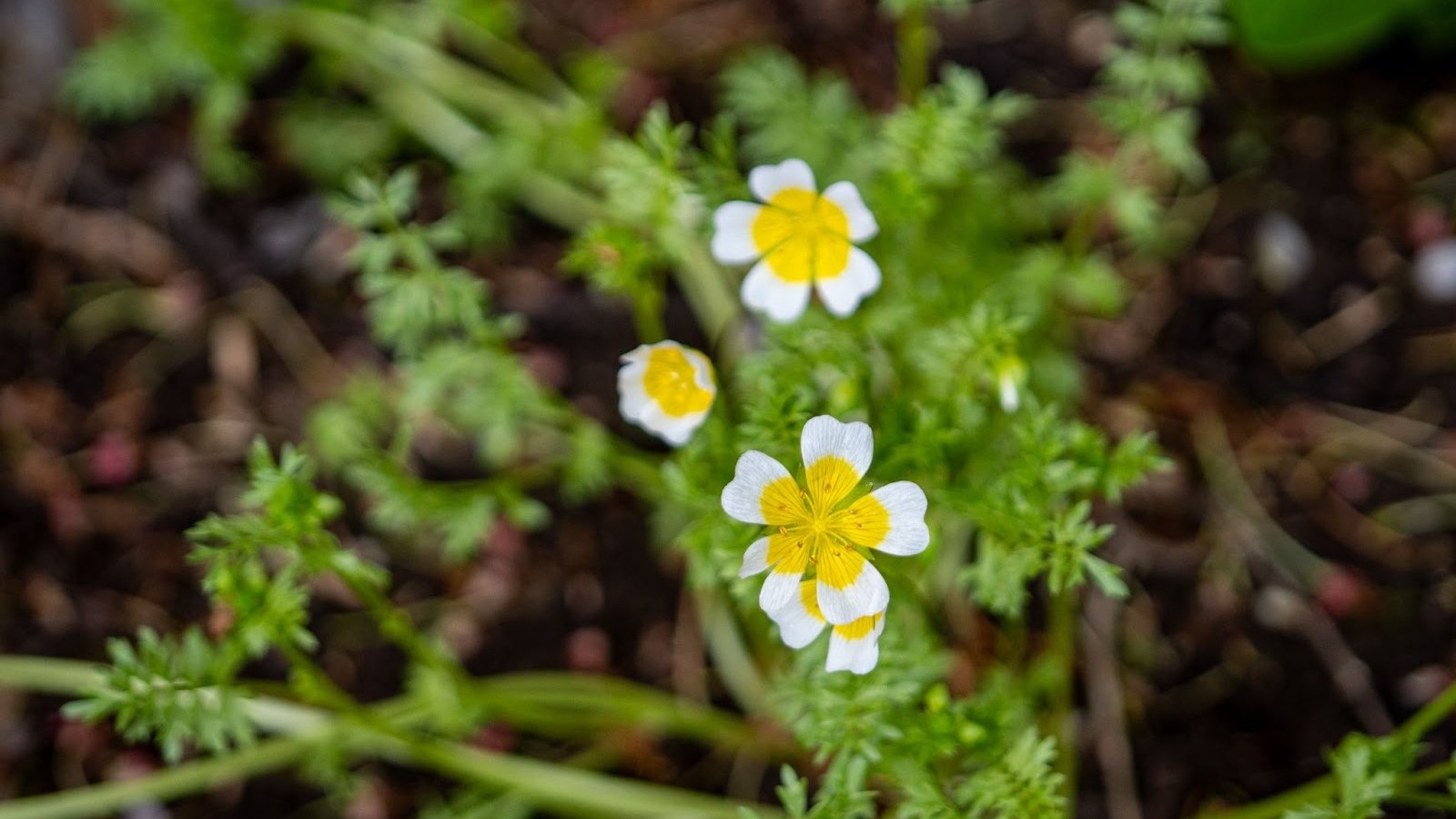
Choose native plants to boost your backyard’s biodiversity! Native species like poached egg plants provide valuable nectar, pollen, leaves, and habitat space for local wildlife. Insects, mammals, and birds all benefit when native plant species are abundant. Plant poached egg plant once this year, and you’ll have plenty of seedlings pop up every year.
The poached egg plant is a species of Limnanthes that thrives throughout the West Coast and Pacific Northwest. It receives its name from the look of its flowers, which have yellow centers and white rims like a poached egg.
This native species prefers cool temperatures and wet weather with well-draining soil. It thrives in early spring, blooming and sowing seeds; some sprout in fall, while others wait until spring. Fall seedlings overwinter and bloom in early spring, while the other remaining seeds sprout anew to bloom by early summer.
Branching Larkspur
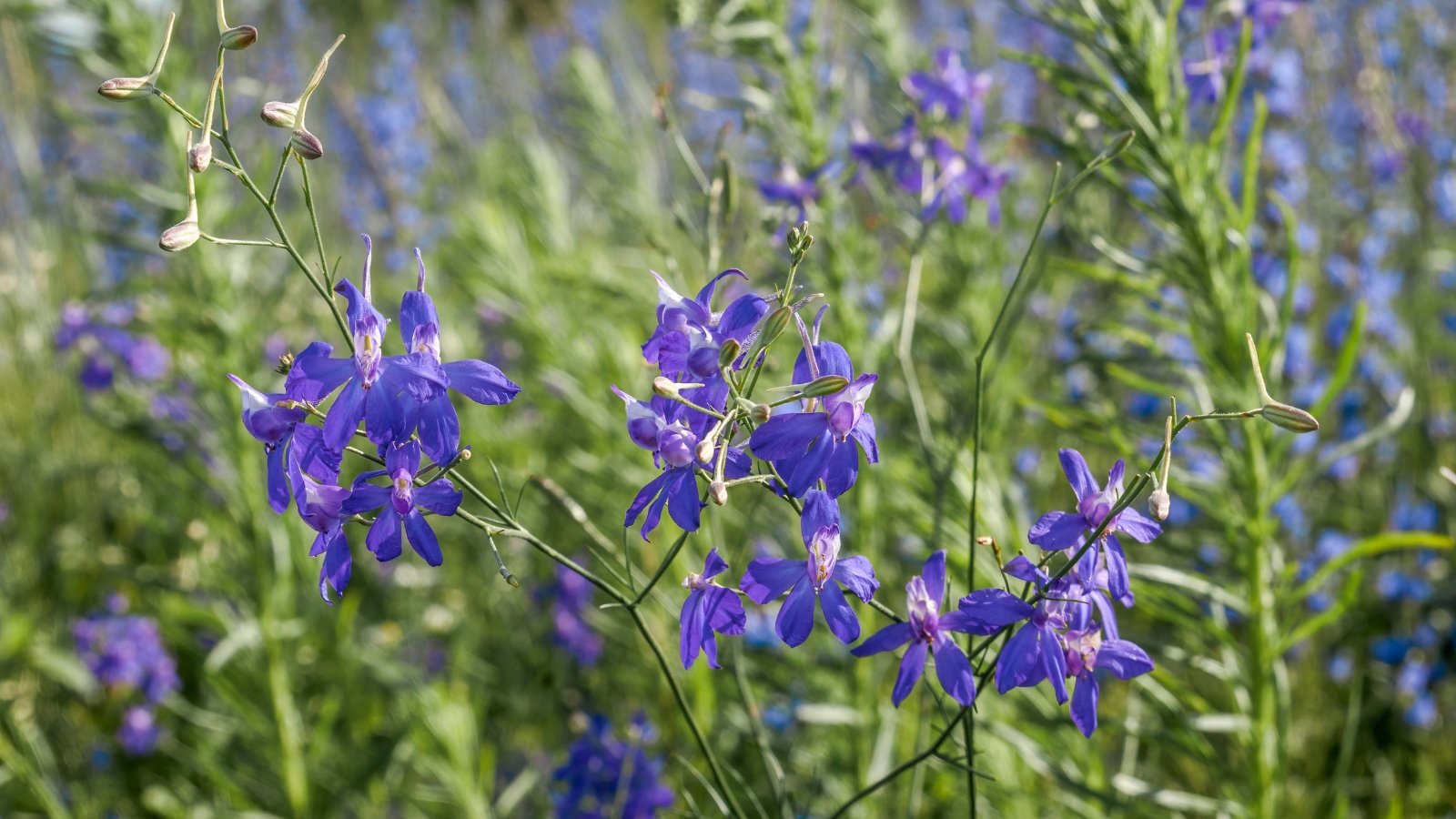
Branching larkspur is an ornamental species similar to perennial delphiniums, and equally as toxic to consume! It sprouts tall stems with flower spikes that have dozens of blooming blossoms. The foliage resembles love in a mist, with fine needle-like leaves that radiate off the stems. The branching larkspur species has deep purple-blue flowers that stand out in pollinator gardens; they attract pollinating insects with nectar and pollen.
Branching larkspur reseeds readily, and it sometimes sprouts in wild spaces throughout North America. Let it go to seed as autumn arrives and you’ll spot dozens of seedlings next spring. This annual prefers chilly weather, and it thrives during spring with ample moisture. Your seedlings may die out in summer, although they’ll survive in areas where the weather stays mild throughout the growing season.
Opt for the ‘Shades of Blue’ larkspur seed mix if you prefer light blue and white flowers instead of purple ones. These larkspurs reseed like the species does, although the seedlings may look a bit different than the parent plant. Experiment this year and plant some just to see what happens!
Corn Poppy ‘Pandora’
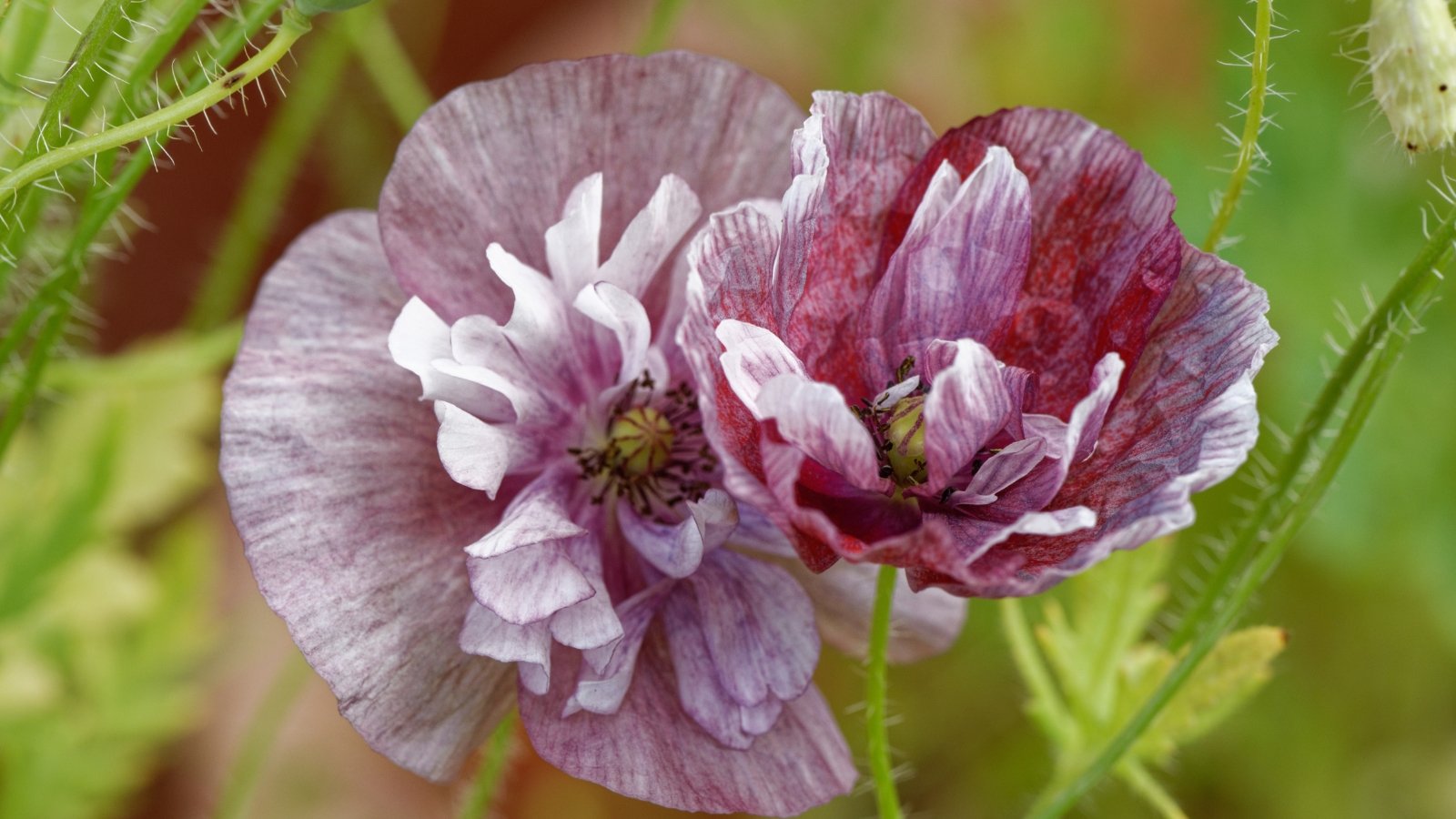
Poppies are beloved flowers that have grown in our gardens for hundreds of years. They sprout flimsy, delicate blossoms with thin petals that fade after a few days. The spent flowers then morph into seed heads that exude a milky substance when you cut them. The seed pods and the flowers are highly ornamental; they stand out amongst other annuals and perennials in the garden.
‘Pandora’ is a special corn poppy with elegant hues. The flowers are creamy mixtures of burgundy, white, and pink. They first bloom with dark colors, then later flowers erupt with lighter pastel colors. Grow ‘Pandora’ to enjoy the color-shifting flowers throughout the growing season.
Corn poppies self-sow themselves when they’re happy. Plant them away from wild spaces so their seeds don’t invade natural environments. Let them reseed readily in your garden, and they’ll sprout seedlings each year that attract honeybees. The new plants may not resemble their parents, although they’ll present unique colors, shapes, and sizes you can only discover by letting them grow.
Desert Bells
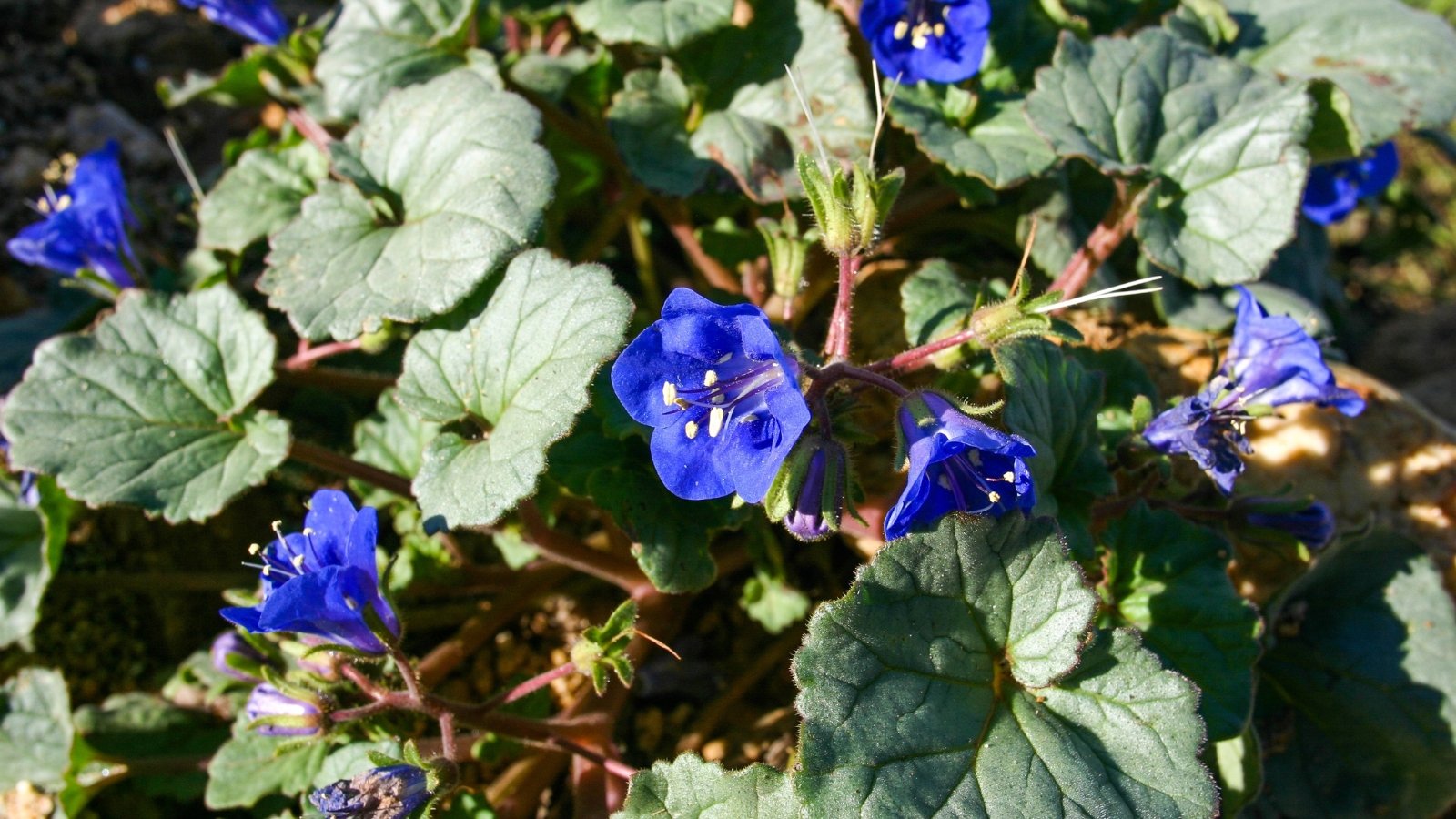
Like poached egg plants, desert bells are native to North America! They thrive throughout warm regions of the West Coast, and they naturalize themselves in areas with similar conditions. These cool-season annuals sprout heart-shaped leaves and blue-violet bell flowers. Because they’re native to North America, they feed native bees like yellow-faced, miner, and mason bees.
Desert bells look their best en masse—sow as many seeds as you can in early spring in cold climates, and in late summer or early fall in mild ones. They may not reseed in cold zones below zone 8, although they might after mild winters. These annuals perform their best from zones 5 through 10, where hard frosts are infrequent during the cool seasons.
If desert bells don’t reseed this year, try saving their seeds so you can sow them yourself. The annuals form green seed pods after their flowers fade in autumn. Cut the stems with the pods, hang them in a brown paper bag, and let them dry fully. The seeds will pop out of their pods and you can store them until you’re ready to sow them in early spring.
Cosmos ‘Diablo’
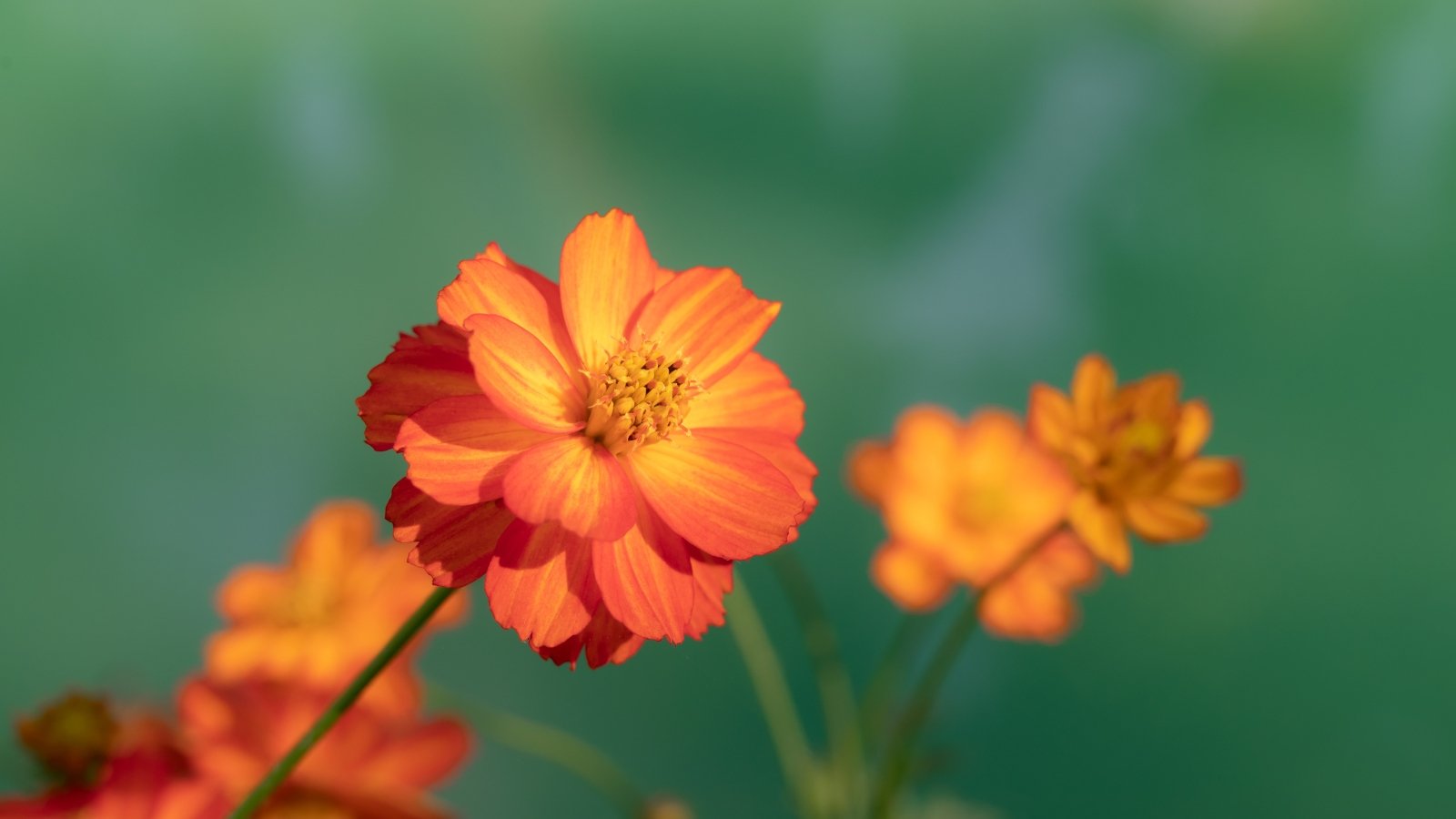
‘Diablo’ cosmos shine under the summer sun. They sprout semi-double blossoms in hues of yellow, orange, and mixtures of the two colors. They match well with pink, white, and red cosmos for a fiery explosion of color! ‘Diablo’ is an heirloom cultivar of the native cosmos species that originates in Mexico and Central America; it’s ideal for gardeners in the southwestern U.S. Those in the southeast should plant with caution as these can be invasive there.
‘Diablo’ is an heirloom variety of cosmos. Its seedlings sprout true to seed, meaning they’ll resemble their parents with similar sizes, structures, and flowers. Cut the blossoms throughout spring for bouquets and floral arrangements, then leave some to sprout seeds from summer through fall.
The seeds may sprout during the current season, or they’ll overwinter and sprout next spring. Let them mature so they attract bees, butterflies, and hungry birds to your garden. The blossoms provide abundant nectar and pollen for wildlife that needs it most.
Farewell To Spring
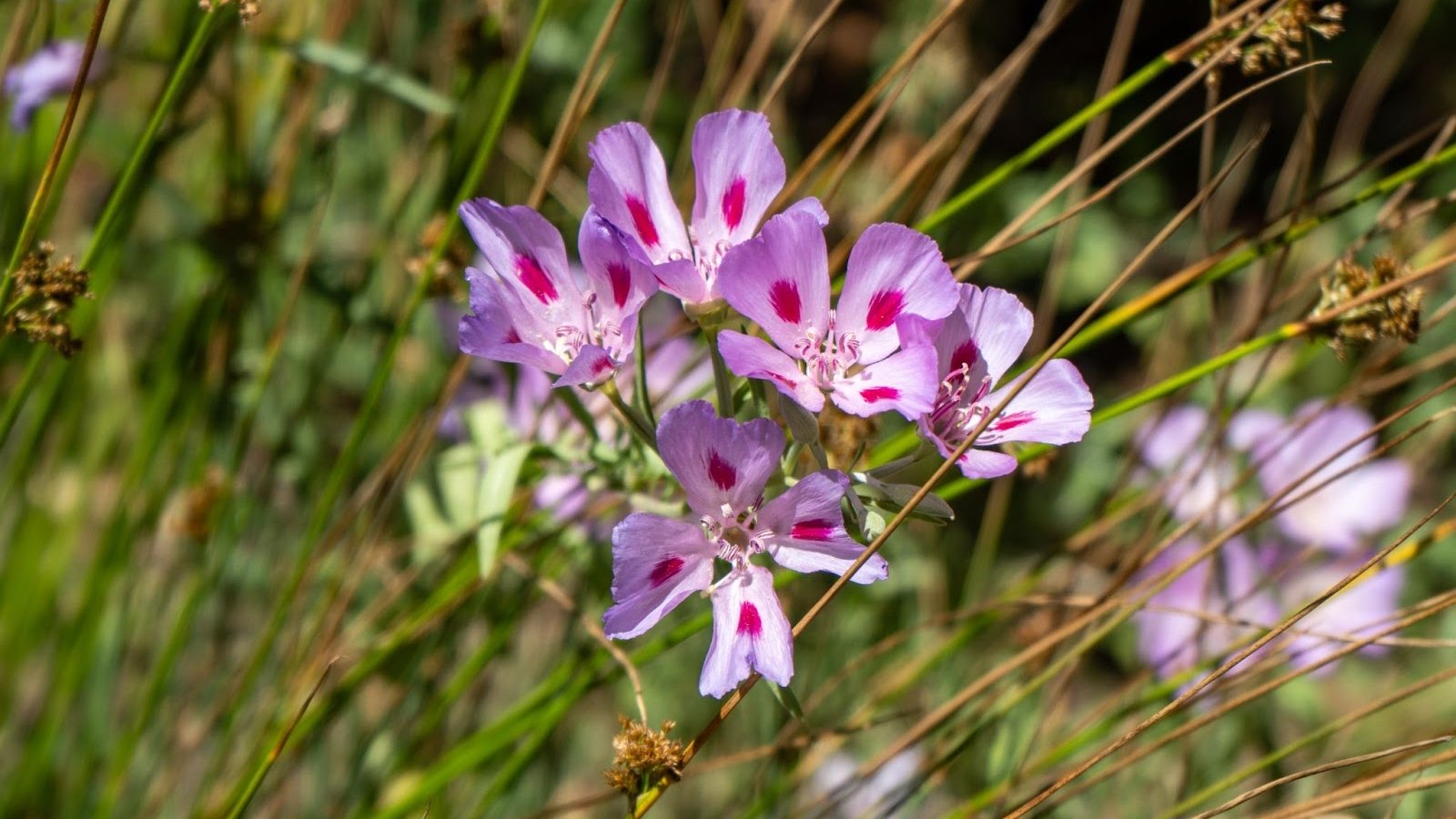
Late blooming annuals are indispensable in the ornamental garden. Farewell to spring is an exceptional native annual that survives drought, heat, and cold temperatures. As its name suggests, it erupts with flowers as spring fades into summer and heat arrives. Pink petals open with red or dark pink blotches on their inner half.
Farewell to spring germinates after cold temperatures cease in early spring. In cold climates with hard frosts, the seedlings and seeds may not survive, although they reliably will within their native range. Give them consistent moisture while they sprout, and let their soil dry a bit when they start flowering. Mature specimens are drought tolerant—they appreciate water after the soil surface dries.
Test if farewell to spring reseeds in your yard by letting it flower and sow seeds at will. Mulch the area, then watch the soil closely in spring. Seedlings have thin, needlelike leaves and they sprout as days lengthen during the growing seasons. If no seedlings appear, your area is likely too cold for them. Collect seeds in fall for spring sowing to have them repopulate your garden.
Amaranth ‘Love Lies Bleeding’
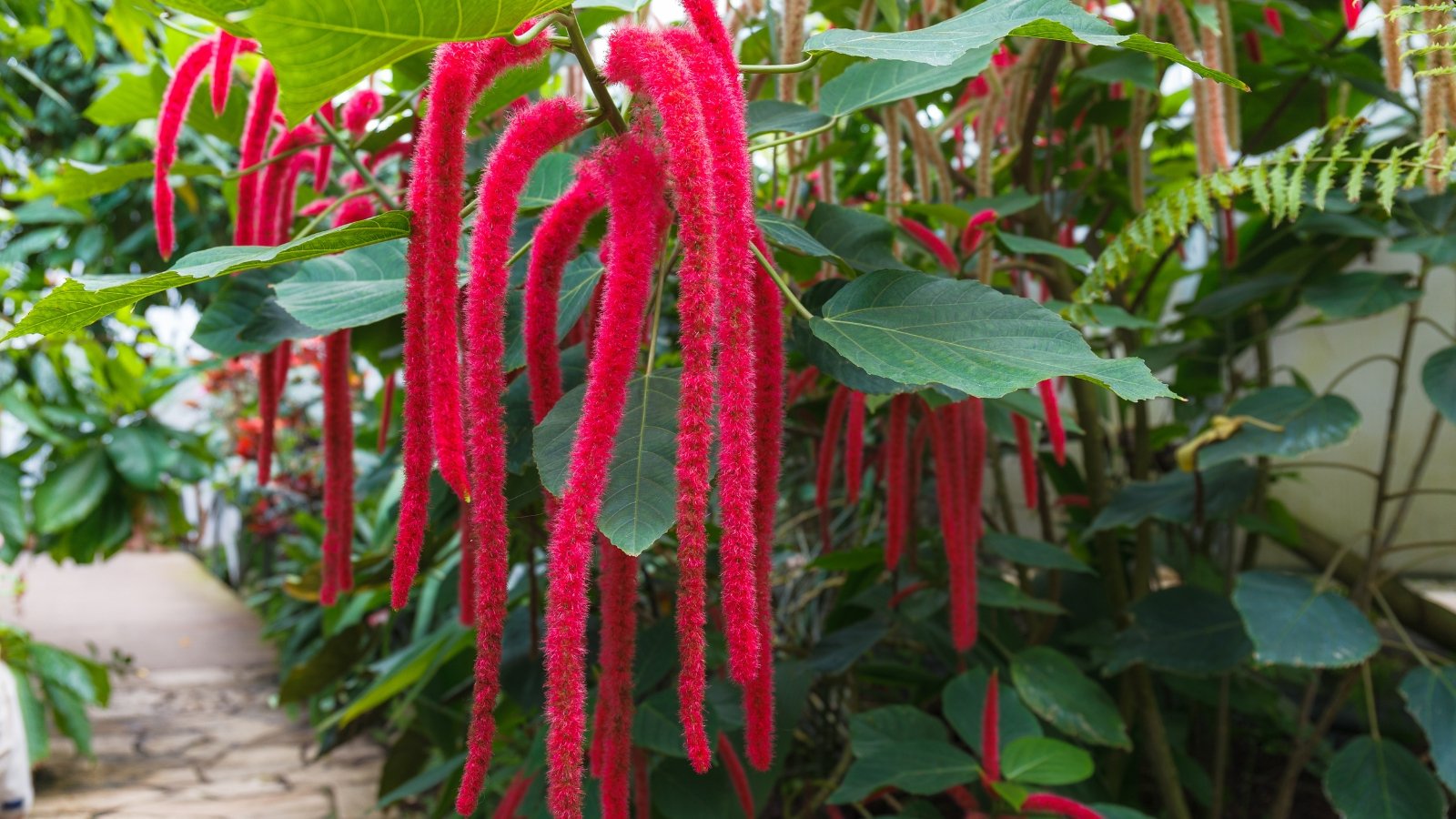
Amaranth is a lovely edible annual crop for the warm season! In mild climates it self sows itself with hundreds of thousands of tiny seeds from a single plant. The leaves, flowers, and seeds are delicious and nutritious, with some grocers offering the seeds in grain mixes!
Not only are amaranth plants culinary blessings, but they’re also beautiful additions to the ornamental garden. Long, bright red flower plumes cascade out of tall stems with strappy green leaves. Mature plants are drought tolerant and seedlings grow into adults quickly during the hot seasons.
You may prune the flower plumes for fresh or dried bouquets, although you’ll want to leave some so they form seeds at the end of summer. The seeds will fall once completely ripe and sit in the soil. Amaranth is a warm-season crop, so you won’t see their seedlings sprout until temperatures rise after winter.
Sunflower ‘Mammoth’
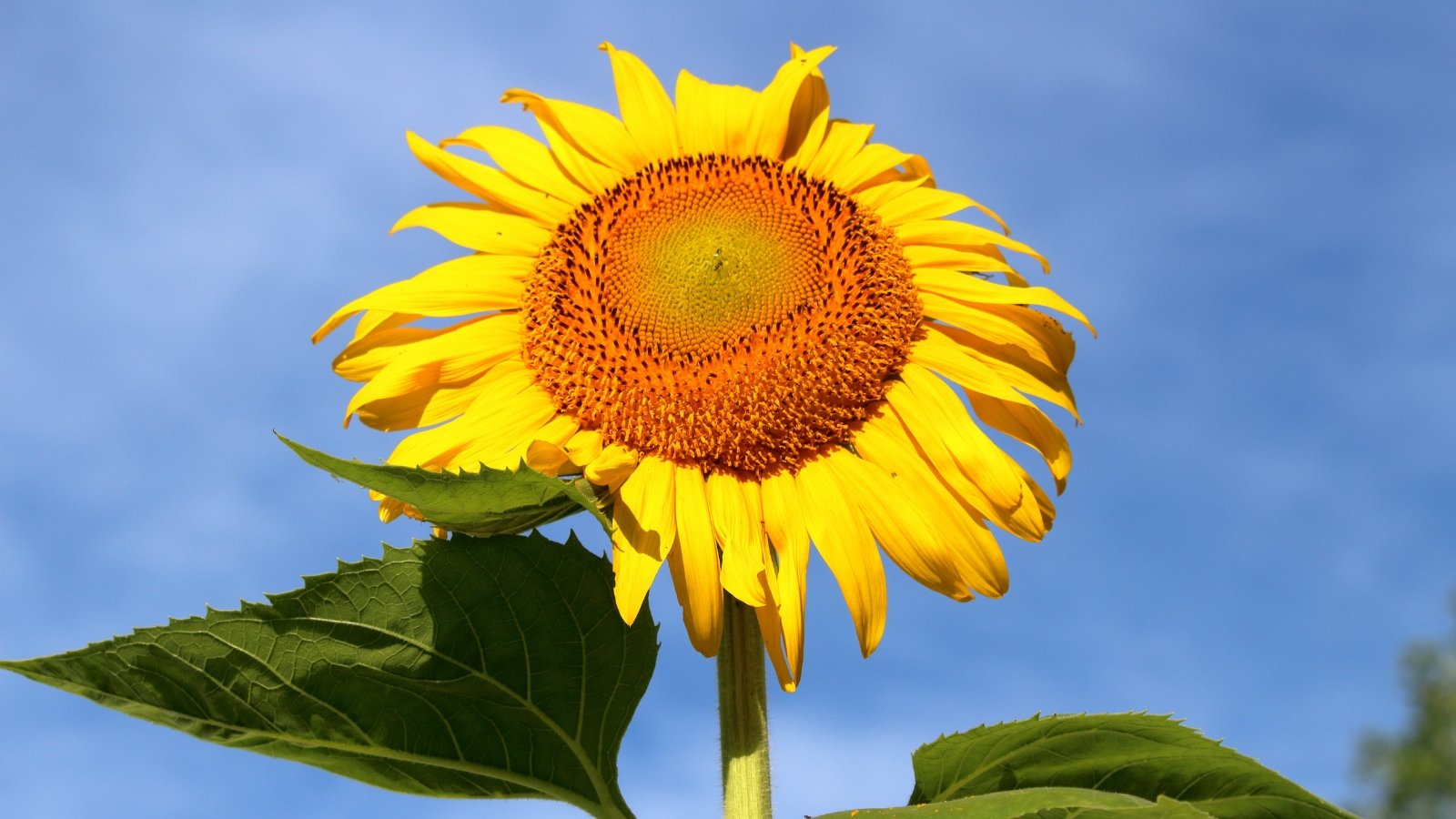
‘Mammoth’ is an heirloom sunflower variety that’s famous for its giant flower heads that sprout on tall stems. They reach over ten feet in the air! The bright yellow heads are lures for birds, bees, and pollinating flies. After these annuals go to seed in the fall, you’ll see more birds and squirrels rush to eat them. Grow sunflowers for wildlife, for their beauty, and to enjoy their edible seeds.
Sunflowers may self-sow, especially in zones with mild winters or thick snow cover. The cover provides a natural mulch that insulates the soil and keeps sunflower seeds safe and warm until next spring. Let them reseed by leaving the flowers alone in late summer. Animals may eat some of their seeds, although others will find their way into the ground.
You may also try hybrid sunflower varieties, although they won’t sprout true to seed. Pollinating insects will commingle other sunflowers’ pollen with yours, giving you seedlings with unique characteristics. Save a few seeds for safekeeping indoors, just in case the outdoor ones fail to sprout.
Romaine Lettuce ‘Rouge d’Hiver’
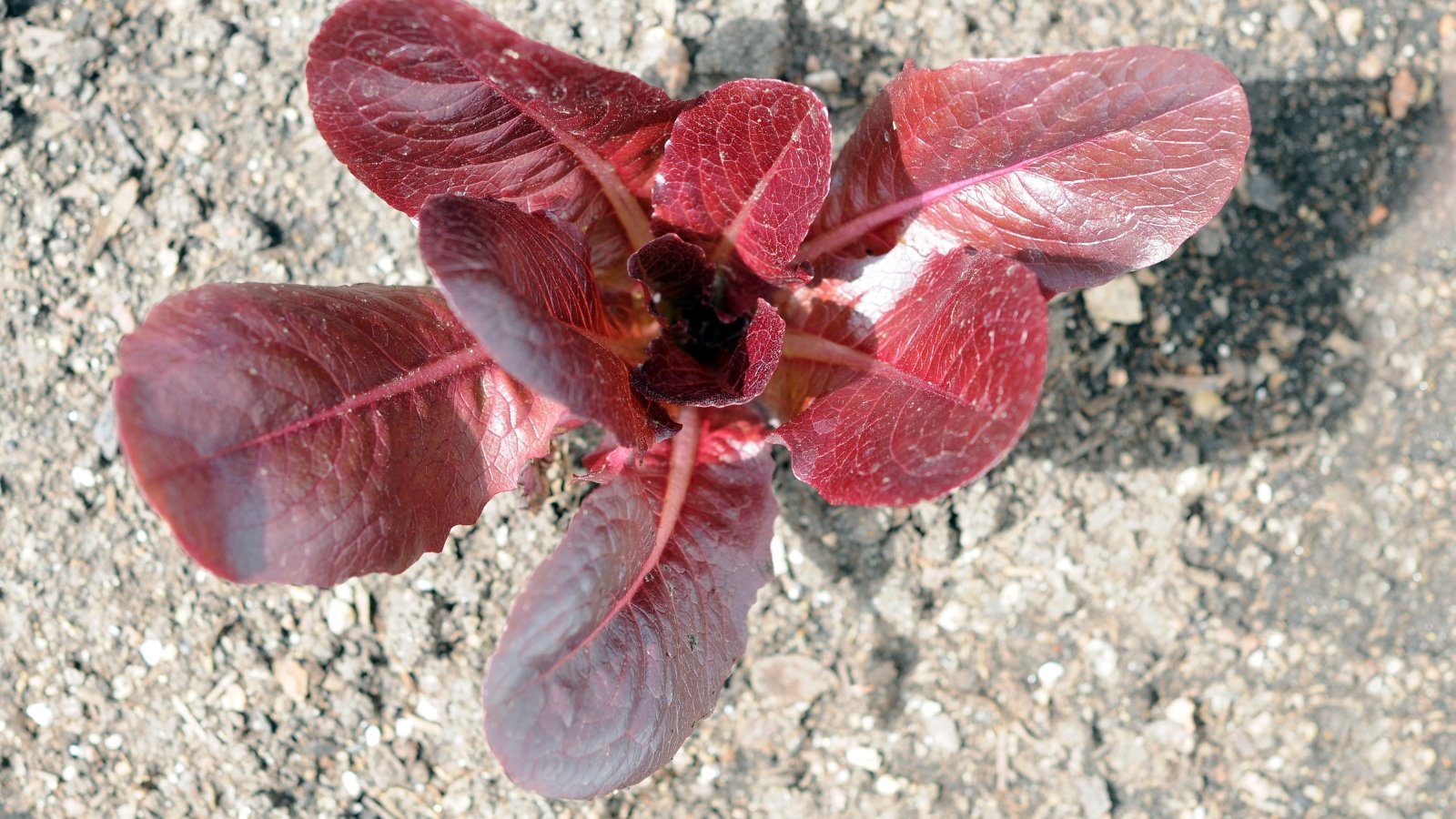
Edible reseeding annuals create free food with little effort on your part! Lettuce is a superb example of one. It bolts as warm summer days bring heat and drought. The yellow flowers it sprouts attract pollinators, and they form black seeds with white plumes after successful pollination and flower fertilization. Leave a few lettuce specimens to reseed, and you’ll have dozens of seedlings in fall and spring.
‘Rouge d’Hiver’ is an old favorite of gardeners worldwide. It’s a romaine lettuce type with red, crimson leaves that have some green in them while they’re young. Harvest the outer leaves as you need to eat them, or wait until the plant matures and chop it down all at once.
Lettuce may cross-pollinate with other weedy species that share similar traits. Pull any weeds you see during summer and fall so they don’t share pollen with your tender ‘Rouge d’Hiver’ specimens. Weedy hybrids may also be edible, although they often are extremely bitter.
Calendula
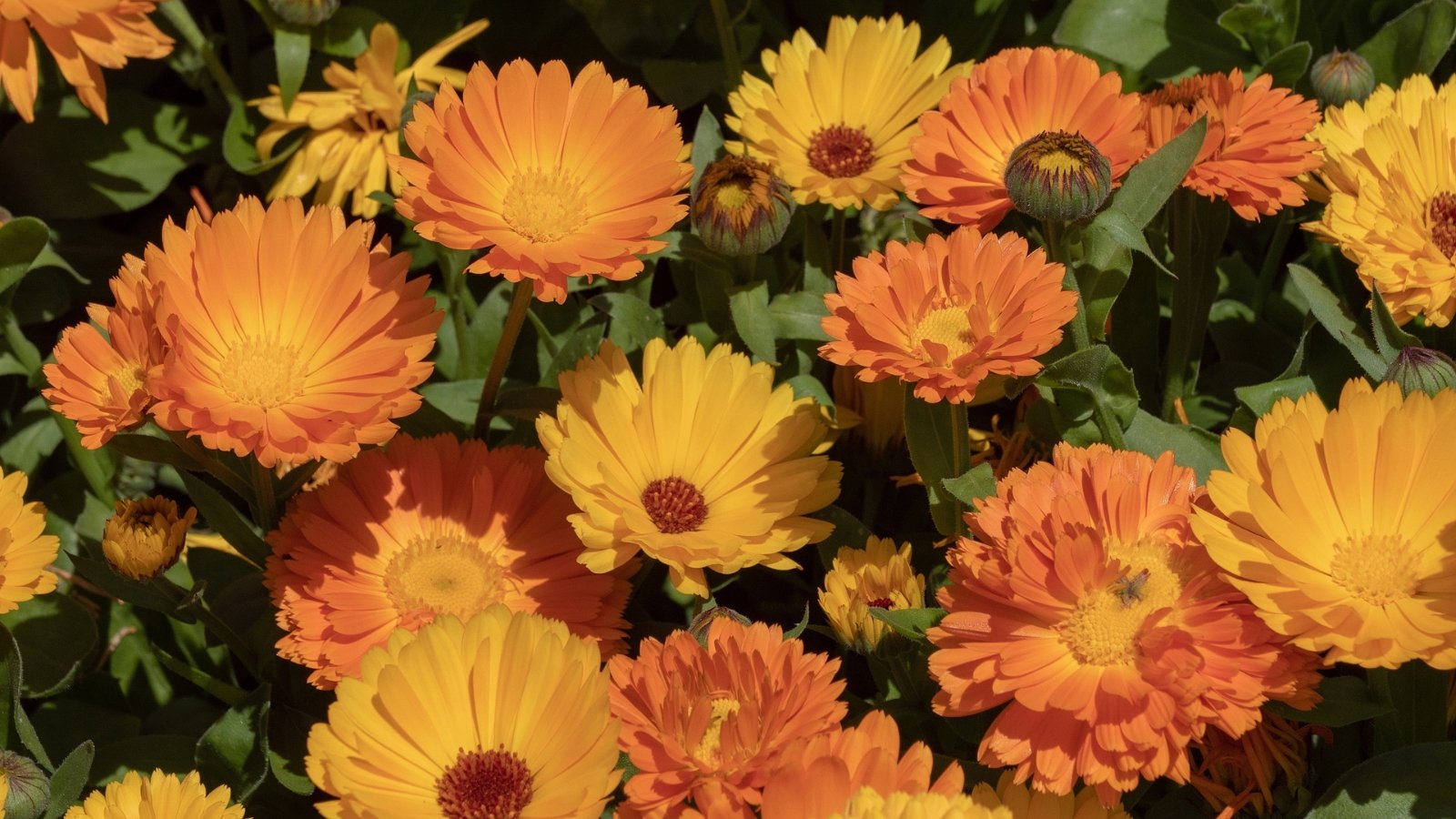
Calendula is a bountiful annual for herbal enthusiasts. It sprouts sunny yellow or orange flowers with bright centers. They shine under the sunlight, creating pockets of warm colors wherever they thrive. The petals are dainty and edible, adding floral charm to salads, scrambles, and tea blends. Use them fresh or dry to infuse their nutritious resin into your food.
‘Resina’ is a special variety with flavorful petals in creamy shades of orange and yellow. Try ‘Oopsy Daisy’ for a cultivar with more flair; its flowers have fiery tips on orange, yellow, or peach-colored petals.
Calendula flowers on long stems, meaning you can use them for fresh bouquets or dry floral arrangements. Allow a few flowers to remain on the plant if you’d like them to self-sow in autumn. They’ll sprout seedlings next spring in cold climates, or during the winter in mild ones.
German Chamomile
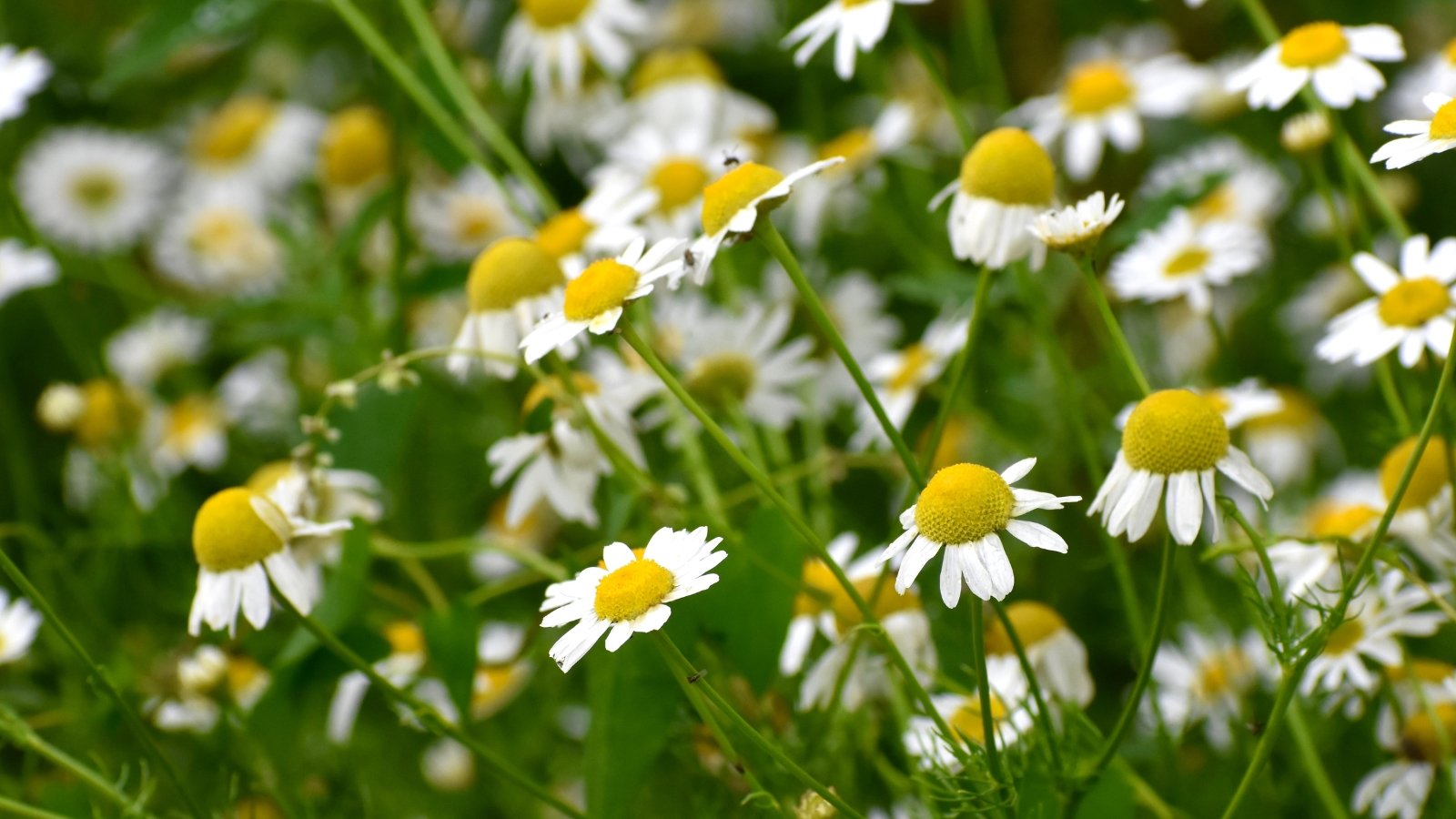
If you like herbal tea you must grow German chamomile; it’s a sweet-smelling annual herb that thrives during cool weather. The flowers are the common source of chamomile tea you buy from grocers or herbal specialists. Plant some German chamomile seeds this season, and you’ll save money on sleepy tea for the rest of the year!
German chamomile reseeds itself from zones 2 through 8, although it performs well as a cool season annual in all other areas throughout North America. Sow it as soon as the soil thaws in late winter or early spring, and you’ll see seedlings with lacey foliage sprout 10 to 15 days later.
For tea blends, harvest chamomile flowers while the petals are perky and the centers are sunshine yellow. They have the best flavor before they mature into seeds while the flower heads are swelling. Pick them fresh to brew a tea that day, or dry them in hanging bunches to use them throughout the year.
Borage
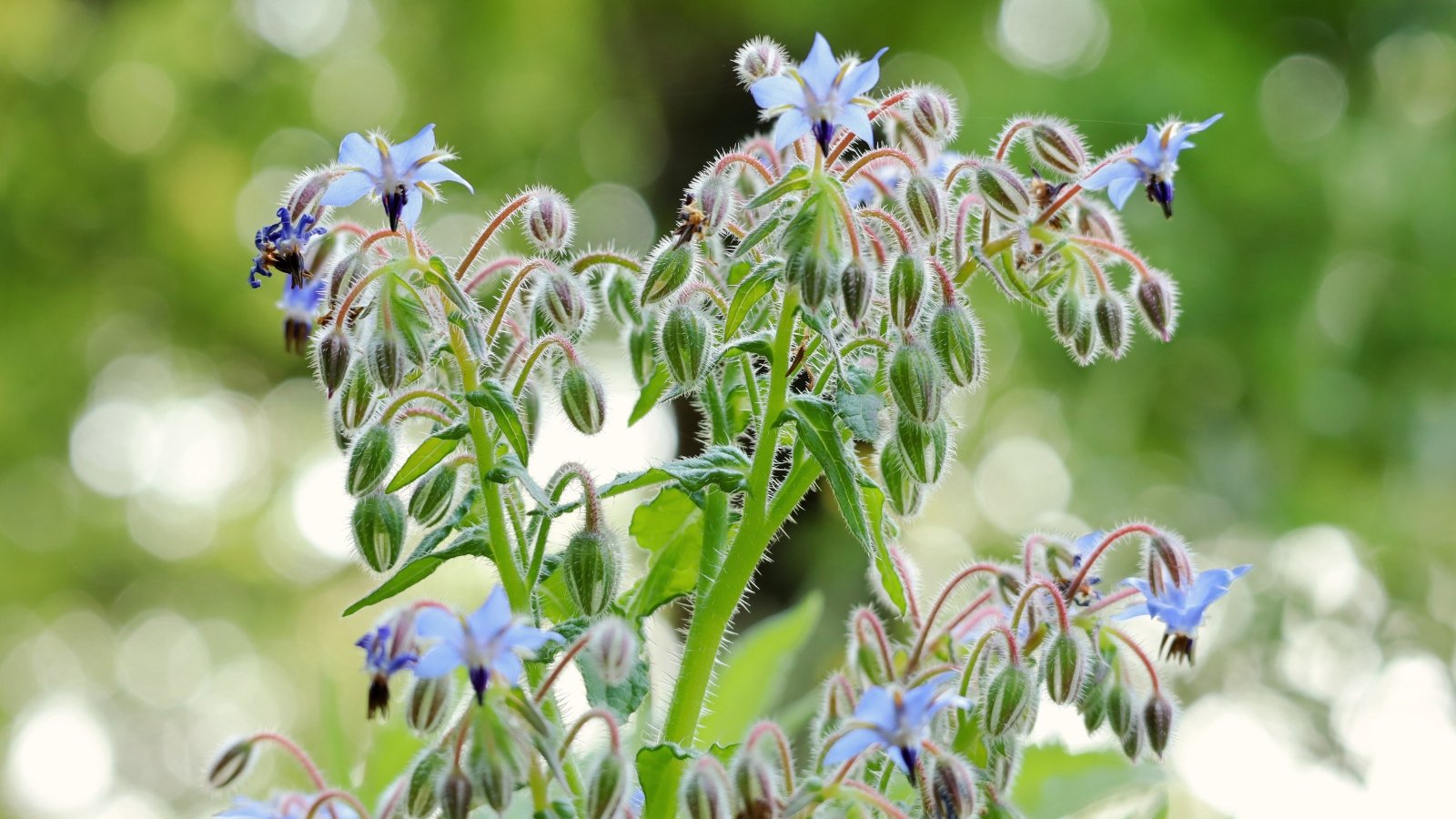
Plant borage for the bees—they love the flowers! You’ll see them dangling below the blue blossoms, gathering valuable pollen and nectar while they’re abundantly available. The blue flowers are edible and add pops of color to salads, charcuterie boards, or dressings. Their leaves are flavorful, too, despite their tiny hairs. Chop or steam the leaves before consuming them to make them more palatable.
Borage is one of the hardiest reseeding annuals; you’ll see new seedlings pop up in fall, spring, and summer wherever mature plants stand. They dump their seeds by the dozens into bare soil pockets. Grow borage amongst other annuals like sunflowers, chamomile, and lettuce for a self-seeding edible garden.
Start borage in your garden by sowing seeds while the weather is mild, moist, and cool. Sow them a week or two before your last frost date in cold climates, and sow them anytime year-round in mild ones.
Garden Nasturtium
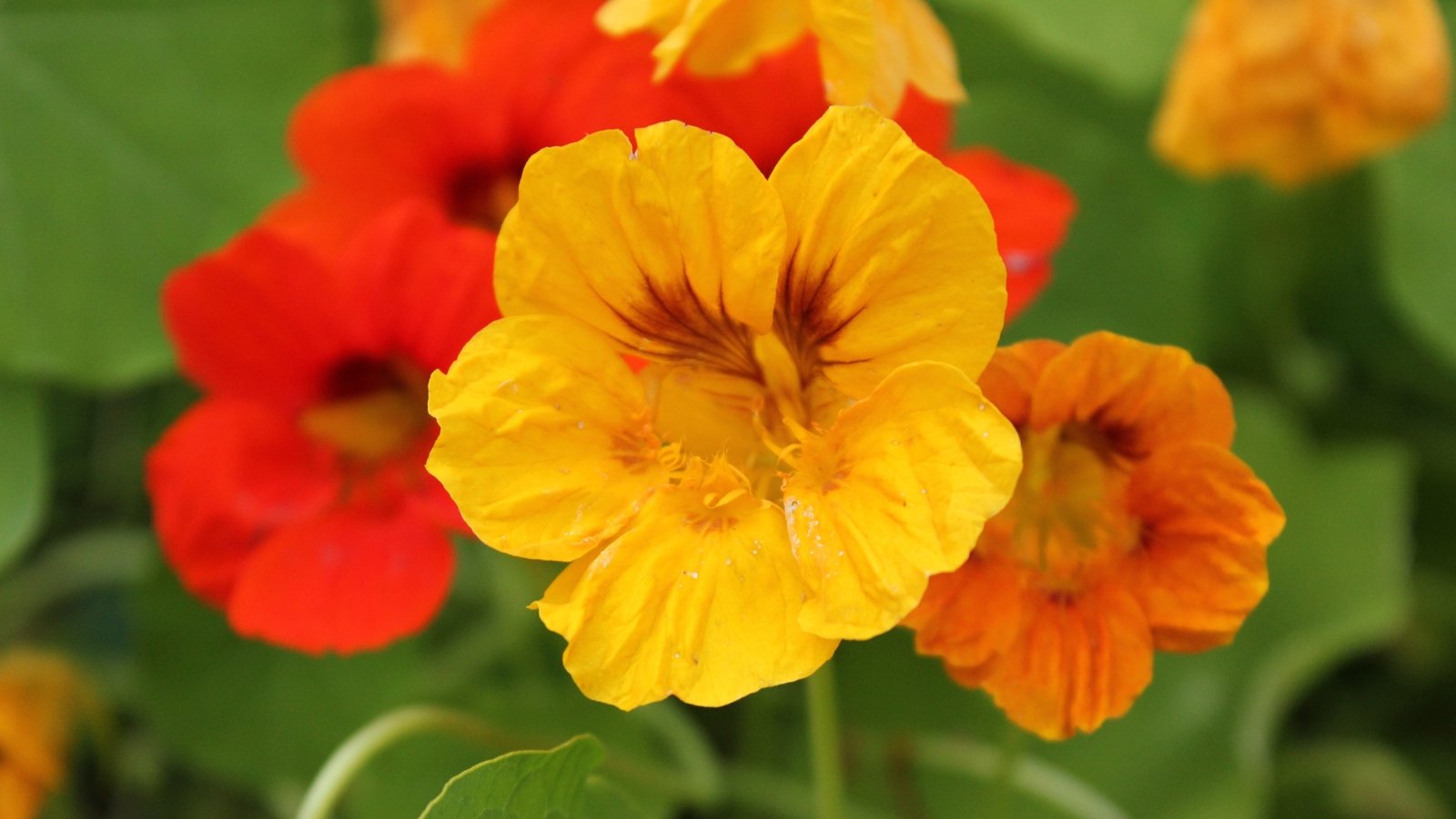
Rounding out this list is my all-time favorite annual, the garden nasturtium! Though not technically a part of the watercress genus Nasturtium, this plant resembles the pungent vegetable with similar strong flavored flowers, leaves, stems, and seeds. Gardeners like using it as a trap crop, as slugs and other pests stay in it instead of your valuable vegetable crops.
This warm season annual is one of the most prolific reseeding species. It sprouts dozens of wrinkly green seeds that mature dark, brown, and woody. Opt for a variety like ‘Alaska Variegated’ for a reliable heirloom that sprouts true to seed. It has green leaves with white streaks and splotches, and the flowers come in orange, red, yellow, or white.
‘Alaska Variegated’ is bushy, but trailing types exist too! They climb, ramble, or hang about wherever you plant them. Use ‘Single Blend’ for a mixture of red, yellow, and orange blossoms on stems over five feet long. If you live in California, check to ensure you’re not growing an invasive species before you plant nasturtiums.




